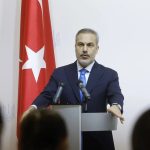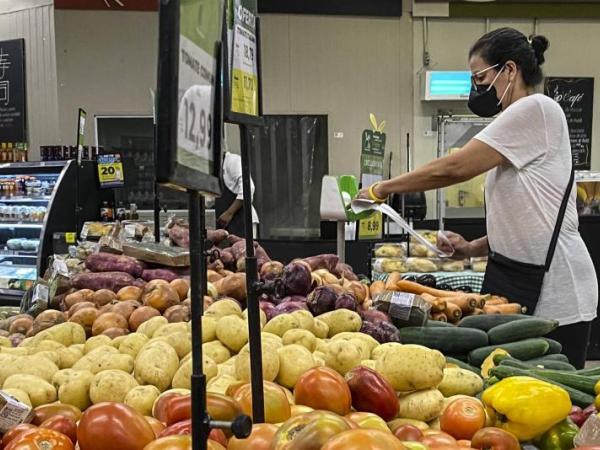The Vice Prime Minister of the Republic and Minister of Economy and Planning, Alejandro Gil Fernández, informed the Cuban Parliament this Saturday that the sell currency freely convertible (MLC) to state and non-state economic actors, whose activities constitute a priority for the development of the country.
In the V Extraordinary Session of the National Assembly of People’s Powerin his IX Legislature, Gil Fernández specified that a secondary currency sale scheme will be implemented gradually and selectively, as part of the updating of its economic and social strategy, according to reports Rebel Radio.
#NOW Deputy Prime Minister and Head of @MEP_CUBA, @AlejandroGilFshares with the deputies distinctive aspects of the behavior of the Cuban economy, as well as an update on the country’s Economic-Social Strategy. pic.twitter.com/46mKQAv9ty
— Cuba Presidency ?? (@PresidenciaCuba) May 14, 2022
The MLC offer will only be directed to “national state and non-state suppliers, agreeing with them production levels and prices for their commercialization in Cuban pesos,” states a report from Cubadebate.
The minister acknowledged that “today there is a piece missing in the design of the country’s monetary functioning,” which is the sale of foreign currency to the population, which generates a gap between the official exchange rate (one dollar for 24 Cuban pesos) and the of the informal market, in which a dollar oscillates between 115 and 125 Cuban pesos.
Gil Fernández dismissed the idea that informal exchange is what gives balance to the Cuban economy, so the government will not go out to “sell foreign currency for 125 pesos.”
“We have to deal with an intermediate point (…) It is a secondary foreign exchange allocation scheme in which it can be sold to state and non-state economic actors at an exchange rate higher than 24, but lower than the informal one, which It will allow us to support productions that will later be sold to the population in national currency”, he pointed out.
This first step will focus on the production of food and other items in high demand, to then move on to reestablishing the sale of foreign currency to the population. However, Gil Fernández warned that this will not happen today or tomorrow: “We have to focus on getting products and how to guarantee the country’s sustainability,” he said.
The implementation of this secondary scheme for the sale of foreign currency will seek to progressively expand “the entry of more economic actors” and, in this way, “increase the supply in national currency and the collection of liquidity to advance the country’s monetary balance.”
? Measures to guarantee the fulfillment of economic objectives, exposed by Alejandro Gil, Minister of Economy and Planning during the Fifth Extraordinary Session of the National Assembly of People’s Power in its IX Legislature pic.twitter.com/lic0A0bRN5
— Cuban News Agency (@ACN_Cuba) May 14, 2022
On the other hand, in the report of the Minister of Economy and Planning on the behavior of the Cuban economy between the months of January and April 2022, it highlights the fact that the island’s trade deficit was three times higher than its exports in that period.
The also Vice Prime Minister of the Republic indicated that in the first four months of the year, exports of goods amounted to 590 million dollars, while imports accounted for 2,397 million dollars. These indicators leave the country with a trade deficit of 1,807 million dollars, slightly more than three times the total volume of exports in that period.
“Many of the products that the country imports today have increased their sales prices on the international market, as is the case with oil and food,” Gil Fernández explained to Parliament. This means that “even when the import is greater, it is not equivalent to the physical growth of the merchandise that is imported. There is an imported inflation, a growth in the prices of products that does not depend on us”, he added.
Gil Fernández also reported that 411 state companies registered losses between January and April, which represents about 25% of the total number of publicly owned business entities. Thus, he assured that “the recovery of the country’s economy is a process full of challenges that faces the growth of prices in the international market and its own internal contradictions, the existence of an informal exchange market, and other complexities.”
Among the factors that affect the economic “recovery”, he mentioned the availability of fuel and foreign exchange, the rise in food import prices, the deterioration of the purchasing power of wages due to inflation and macroeconomic imbalances.
Cuba describes its presumed exclusion from the Summit of the Americas as a new US aggression
Nevertheless, Gil showed cautious optimism. He assured that Cuba is “recovering part of the ground lost in recent years, after a 13% drop in GDP” (gross domestic product).
“The results achieved at the beginning of 2022 indicate that we are going in that direction,” he said, referring to a slow recovery.
With information from Eph.
















